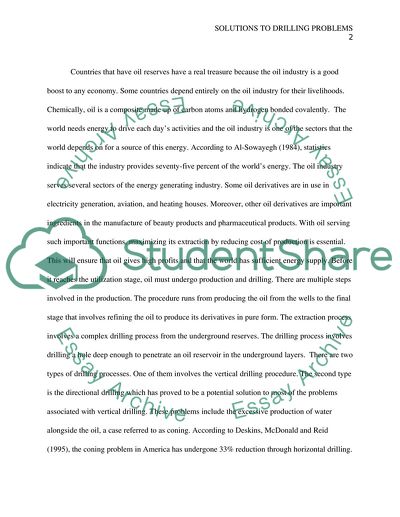Cite this document
(Analysis of Solutions to Drilling Problems in Oil Extraction Research Paper, n.d.)
Analysis of Solutions to Drilling Problems in Oil Extraction Research Paper. Retrieved from https://studentshare.org/technology/1775518-to-what-extent-can-be-associated-problems-with-the-drilling-process-be-solved-by-stimulation-lost-circulation-materials-and-underbalanced-drilling-and-their-impact-on-the-oil-production-process
Analysis of Solutions to Drilling Problems in Oil Extraction Research Paper. Retrieved from https://studentshare.org/technology/1775518-to-what-extent-can-be-associated-problems-with-the-drilling-process-be-solved-by-stimulation-lost-circulation-materials-and-underbalanced-drilling-and-their-impact-on-the-oil-production-process
(Analysis of Solutions to Drilling Problems in Oil Extraction Research Paper)
Analysis of Solutions to Drilling Problems in Oil Extraction Research Paper. https://studentshare.org/technology/1775518-to-what-extent-can-be-associated-problems-with-the-drilling-process-be-solved-by-stimulation-lost-circulation-materials-and-underbalanced-drilling-and-their-impact-on-the-oil-production-process.
Analysis of Solutions to Drilling Problems in Oil Extraction Research Paper. https://studentshare.org/technology/1775518-to-what-extent-can-be-associated-problems-with-the-drilling-process-be-solved-by-stimulation-lost-circulation-materials-and-underbalanced-drilling-and-their-impact-on-the-oil-production-process.
“Analysis of Solutions to Drilling Problems in Oil Extraction Research Paper”, n.d. https://studentshare.org/technology/1775518-to-what-extent-can-be-associated-problems-with-the-drilling-process-be-solved-by-stimulation-lost-circulation-materials-and-underbalanced-drilling-and-their-impact-on-the-oil-production-process.


